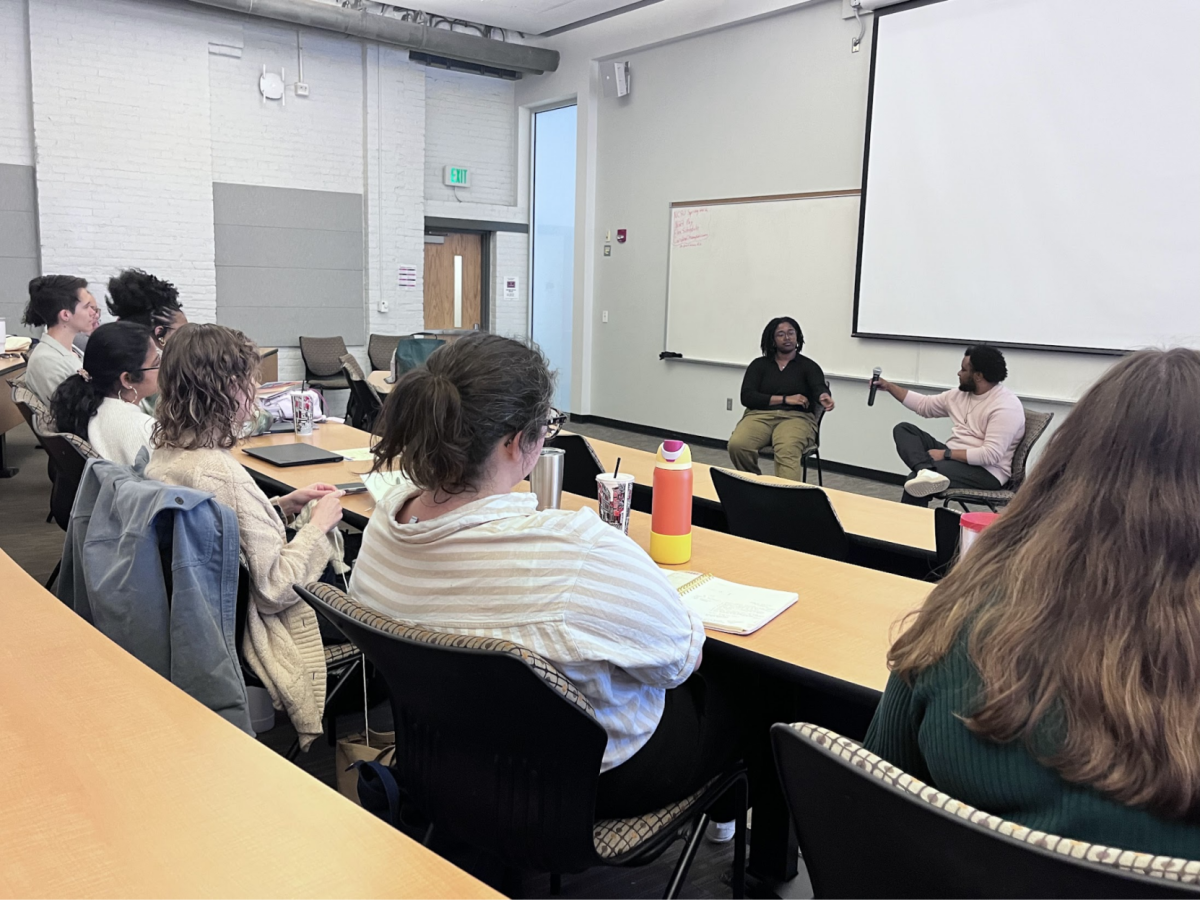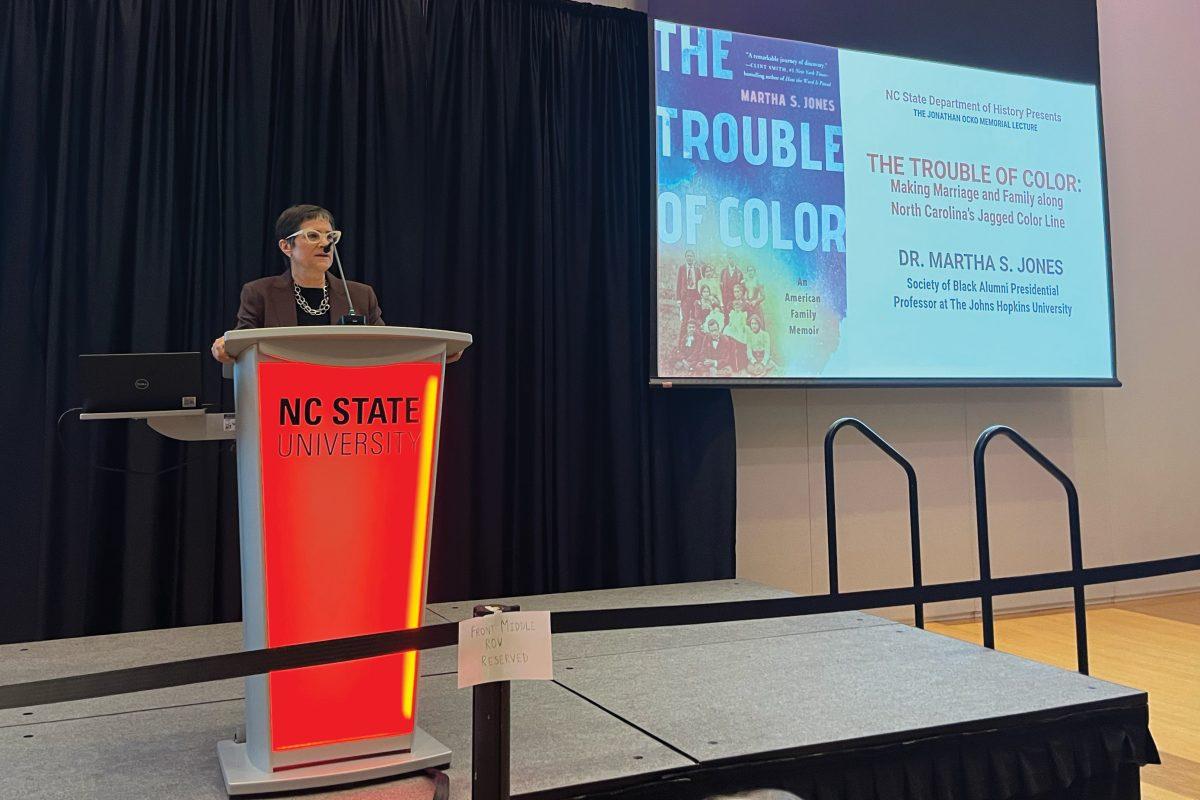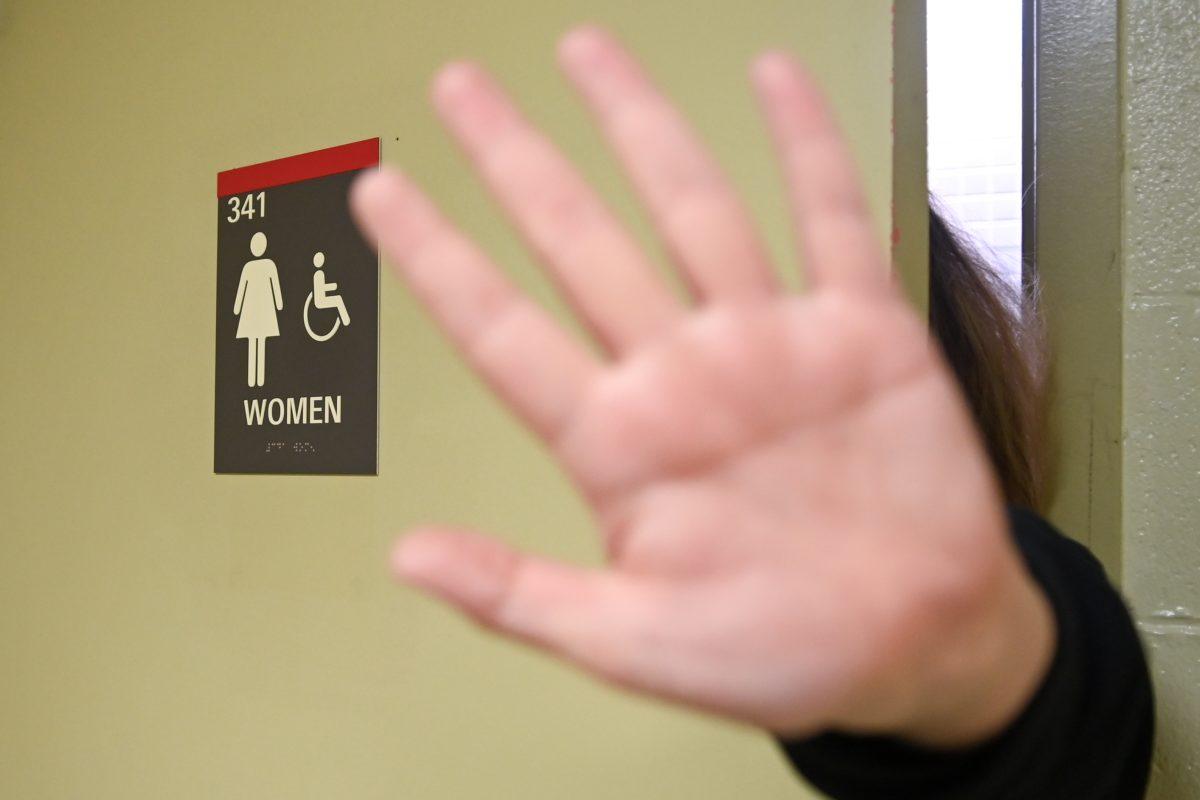The Department of History organized the Queer Public History conference where students, scholars and community-based historians explored topics around LGBTQ+ and marginalized people’s historical narratives.
Nishani Frazier, the director of the public history program, organized the event. Every year, the program hosts a symposium to explore a certain topic in public history and bring in diverse experts to speak to students about the field.
The focus this year revolved around LGBTQ+ people and historians’ relationships to the topic. This covers all people who identify as gender or sexually non-conforming.
Frazier and Traci Voyles, the head of the history department, both introduced the event, acknowledging the complex social and political state the country is in. They both said it was important to continue using history as a means to understand the world and create change.
“It is our job to tell the truth,” Frazier said. “In this moment, we gather together and believe that history educates us, connects us, sustains us and makes us. These presenters give you insight into the new ways we memorialize queer history and utilize queer theory in the making of publication.”
The crowd gathered in the Park Shops building was mostly made up of members of the history department faculty and graduate students in the program.
Damon Scott, an associate professor of geography and global intercultural studies at Miami University of Ohio, was the featured speaker of the conference. He discussed a book he recently wrote, “The City Aroused: Queer Places and Urban Redevelopment in Postwar San Francisco,” about urban redevelopment and queer spaces in post-war San Francisco.
He said the symposium highlights not only the importance of history as a discipline but the ways it can contribute to a better understanding of marginalized people and how to amplify those voices.
“Queer history, in particular right now, is something that is not only facing a lot of threats from a changing political climate but also shifts in the way that higher education is being understood,” Scott said. “I think that it is also the same moment then, in which those people who are in academia, who are in public history, their voices really need to be heard.”
Megan Cherry is a history professor who teaches relevant courses such as HI 369: Sexuality in U.S. History and HI 795: Queer Public History. Students create their public history projects with a range of walking tours to oral histories, each highlight LGBTQ+ stories throughout time.
Cherry said conferences like this are very beneficial to the community and students’ learning.
“It adds more voices and more diverse voices to the conversation,” Cherry said. “It helps to create more of a community and more of a connected network within the Triangle of people who are interested in queer public history so that we can start having sort of more fruitful connections and collaborations with them.”
Tanmai Vemulapalli and Taylor Williams are both second-year students in the public history master’s program. They both are in Cherry’s HI 795 class this semester and were in attendance at the forum.
Vemulapalli said the content of the event fit perfectly with the content of their class on the subject and it was beneficial to hear different perspectives from new experts.
Williams said learning about queer public history enhanced her understanding of her specialty of African American public history. She said the conference was good for anyone to attend so they are better equipped to deal with current-day issues.
Both students said it was personally important to gain an understanding of issues relating to the LGBTQ+ community and how it’s been impacted by systematic erasure throughout history.
Kamau Pope, a Ph.D. candidate at the Duke history department, presented a presentation about certain methodology usage to emphasize community-centered approaches rather than a strict researcher-subject divide.
“Historical storytelling is an active, living and breathing piece of how we can understand what is shaping communities in real-time,” Pope said.
“Histories are living, they’re not static.”
Kayla Patterson, a Ph.D. student in parks, recreation and tourism management, opened her presentation with a piece of writing about her experiences as a Black, queer woman. She said personal understanding is vital to her research.
“I think as potential scholars, it’s important to know our ‘why’ and how our story intertwines with the work that we do,” Patterson said.
Patterson spoke about the significance of memory and identity in her research centering Black history in Appalachia. She told the story of attending a ceremony for a new statue of Harriett Tubman in Halifax, North Carolina.
“I recognized that me and my mom really only Black people in attendance for this installment,” Patterson said. “So that was another question that came up — who is disseminating this knowledge? And why are we not the ones behind telling these stories?”
Patterson said it was important to analyze who is telling popular historical narratives, or why some groups might find this kind of work inaccessible.
“There are a lot of Black people, Black artists and historians,” Patterson said. “How come none of them are involved in a creation?”
Other presenters also spoke about current-day developments and more recent histories, like the evolution of LGBTQ+ spaces in Durham nightlife or the work of the Raleigh LGBTQIA+ Historic Context Project.
Matthew Champagne is a researcher who got his Ph.D. in public history at NC State. His presentation was about his dissertation, for which he visited numerous historical sites on the East Coast and analyzed their representations of the queer history that occurred there.
Champagne said interpreting queer history can be complicated for many reasons. Historians often feel unequipped to handle the topic or refuse to acknowledge it at all. Homophobia and transphobia can get in the way of telling the whole truth.
“Many [historical museums] imagined queer history to be something so foreign, so alien from all the other histories that they knew, that they imagined they needed not just different tools, but an entirely different tool belt,” Champagne said.
Champagne said historically marginalized people, whether based on race, gender, sexuality, disability or class are often trivialized or erased in historical sites and need to be improved.
“That’s why I’m not here to say anything to fit in [a narrative],” Champagne said. “That’s why I said about my research, I never try to claim who was gay, who was bi[sexual] and who was pan[sexual] in the past. These people will never be able to come out, nor set the record straight. But we should always open our interpretation to queer possibilities.”












